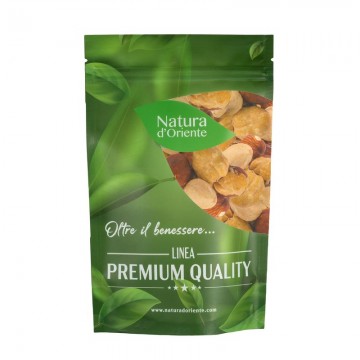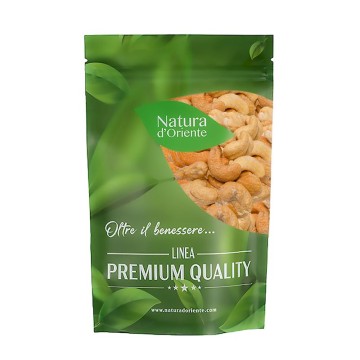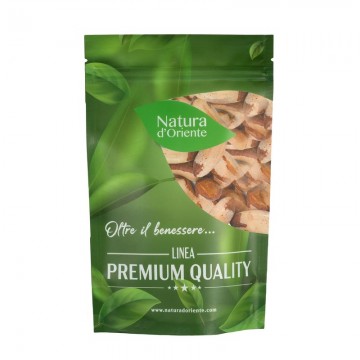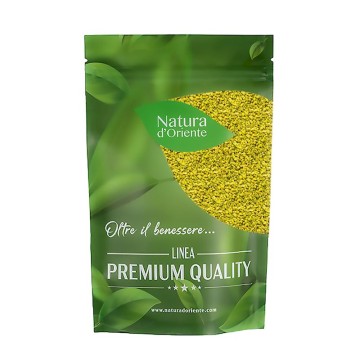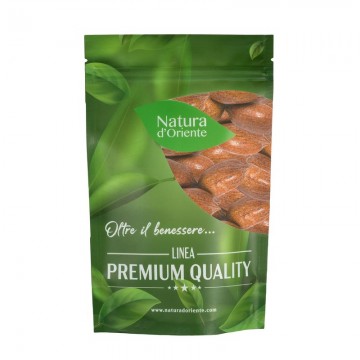Hazelnuts are a concentrate of energy, minerals, vitamins and good fats.
Hazelnuts properties and benefits
There are numerous studies that highlight the beneficial properties of hazelnuts, the content in antioxidants protects the body from oxidative stress, and it also seems that they help keep low the level of bad cholesterol, therefore they would help the heart and thanks to the antioxidant properties they carry out a protective action against cancer. Some of the antioxidants, precisely those of the group of phenolic compounds are concentrated mainly in the peel so raw ones would be preferable, but roasted hazelnuts also retain most of their properties.
Nutritional values of hazelnuts
One hundred grams of hazelnuts provide 628 kilocalories, truly an energy snack. Among the vitamins stand out E (the 15 mg contained in 100 grams represent 100% of the daily ration) and Thiamine or B1 whose 0.643 mg represent 56% of the daily ration. Iron, phosphorus, magnesium and manganese are all over 30% of the daily allowance. Hazelnuts are also very rich in coarse but the proportion between monounsaturated and polyunsaturated fats and saturated fats is 93% and 7%. (remember that saturated fats are the most accused of being harmful to health, essentially because due to their chemical structure they are more difficult to metabolize and therefore more easily accumulate in the blood).
History and cultivation
The history of the food use of the stone fruit is very ancient, there are many testimonies that prove that primitive men ate it even before the discovery of agriculture, when they were collectors . The cultivation of hazelnut, on the other hand, was certainly already widespread in Roman times. In Italy and in particular in Piedmont its use in pastry was widespread when cocoa was scarce (which had been introduced in 1600) due to the embargo decreed by Napoleon Bonaparte against English ships. The prohibitive cost to which the caca arrived led to the discovery of the use of hazelnuts in pastry and it was realized that by mixing cocoa and hazelnut a product of excellent quality was obtained. Currently Ferrero absorbs as much as 25% of the world production of hazelnuts for its products. World production is dominated (at least quantitatively) by Turkey with 776,000 tons, Italy in second place with 98,000, followed by Azerbaijan and the United States.
Hazelnuts in the diet
The same goes for all dried fruit, in small quantities they can be an energetic and healthy snack. Don't overdo it for the calorie intake issue, obviously it also depends on how much you burn. As a snack for athletes or for those who want to gain weight but also to recharge their energy, they are perfect not only for calories but because as we have seen they are rich in mineral salts, for example we have mentioned magnesium which is the energy source of cells and which it is put in supplements not by chance. The good fatty acids can also make them useful as antioxidants and for the health of the arteries, a small amount at breakfast can allow you to dispose of the calories during the day and ensure the benefits.
Plant and fruit
For hazelnut we mean the fruit of all trees of the genus Corylus, which includes both deciduous trees (which lose their leaves in winter) and large bushes, the family of belonging is that of the Betulaceae. The common hazel is the Corylus avellana species. Although all the fruits of the hazelnut species are commercially edible, the only relevant one is Corylus avellana, some of the other species are used for ornamental purposes. In cultivation, the stone reaches heights between 2 and 4 meters, but if left free it can reach eight. It sheds its large leaves in winter. The inflorescences are unisexual of male or female type, therefore the plant for fertilization needs to be pollinated. When the fruit is ripe, the hazelnut, which is wrapped in bracts (modified leaves) is released and falls.
Hazelnuts in the kitchen
The hazelnuts have a fairly sweet taste and are widely used in pastry and desserts.
We chose the Caramel and Hazelnut Cheesecake.
Caramel and hazelnut cheesecake
INGREDIENTS FOR THE BASE (FOR A 22 CM CAKE)
Digestive Biscuits 200 gr
Butter 100 gr
Brown sugar 2 tablespoons
FOR THE CREAM
Fresh spreadable cheese 500 gr
Fresh liquid cream 200 ml
Sugar 120 gr
Hazelnuts 75 gr
Icing sugar 40 gr
Gelatin in sheets 10 gr
Preparation
Caramel and hazelnut cheesecake
Preparation of the fund:
1) Put the Digestive biscuits in the mixer together with the brown sugar, chop them finely and transfer them to a bowl.
2) Melt the butter and add it little by little to the biscuits, stirring to mix everything well.
3) Grease a 22 cm diameter cake pan and line it with baking paper.
4) Pour the crumbled biscuits into the pan and with the back of a spoon compact the biscuit base well
5) Leave the base to cool in the refrigerator for half an hour or in the freezer for 15 minutes.
Preparation of the filling:
1) Heat over low heat in a fairly large pan with a thick bottom 120 gr of granulated sugar with 25 ml of water (the thick bottom prevents the sugar from burning before caramelizing).
2) When the sugar has acquired a nice brown color, add another 50 ml of hot water and mix quickly.
3) Remove the caramel sauce from the heat and let it cool to room temperature.
4) Soften the Philadelphia (in a planetary mixer equipped with a whisk or in a bowl with a whisk or an electric mixer) and add the caramel sauce.
5) Chop the hazelnuts in a blender, leaving some whole aside for the final decoration.
6) Add 25 gr of chopped hazelnuts 10 and finally the icing sugar to the Philadelphia cream and caramel.
7) Soak the gelatine sheets in cold water for 10 minutes. Once softened, squeeze the gelatin and dissolve it in 2 tablespoons of warmed cream.
8) When the mixture reaches room temperature, add the gelatin dissolved in the cream to the cream.
9) Whip the remaining cream until stiff and add it to the cream, mixing it gently with a spatula from bottom to top.
Combining the base with the caramel and hazelnut Philadelphia cream
1) Take back the now cold biscuit base and pour the cream over it, taking care to set aside two tablespoons of dough for the final garnish.
2) Level the surface with a spatula or the back of a spoon and place in the refrigerator for at least 4 hours to harden.
3) Once the resting time for the final garnish has elapsed, decorate the surface with tufts of cream kept aside and placed in a piping bag with a star-shaped nozzle and chopped hazelnuts. Decorate the edges with the leftover chopped hazelnuts.
Recipe source: Ricette.giallozafferano .it
![]()






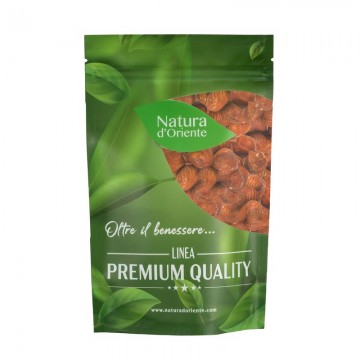




 No reward points for this product.
No reward points for this product.
